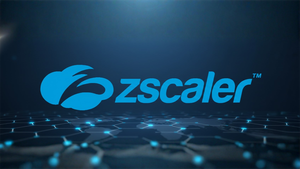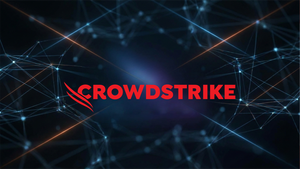The journey from manuscript to published book presents authors with a crucial decision: should they pursue self-publishing or traditional publishing? Each path offers distinct advantages and challenges, and the choice between them depends on various factors, including the author’s goals, resources, and the nature of their book. Understanding the differences between self-publishing and traditional publishing is essential for making an informed decision that aligns with your ambitions as an author.
Control Over the Creative Process
One of the most significant differences between self-publishing and traditional publishing is the level of creative control an author has. In self-publishing, the author retains full control over every aspect of their book, from the cover design and formatting to the content and marketing strategies. This autonomy allows authors to make decisions that best reflect their vision and brand without outside influence. However, this also means that the author is responsible for all the work involved in producing a professional-quality book.
In traditional publishing, the publisher typically takes control of many aspects of the book’s production, including editing, cover design, and marketing. While this can relieve the author of many responsibilities, it also means that they must be willing to collaborate closely with the publisher and may have to compromise on certain creative elements. For authors who prefer a hands-on approach, this loss of control can be a significant drawback, but for others, the expertise and resources of a traditional publisher can be invaluable.
Financial Investment and Earnings
The financial dynamics of self-publishing and traditional publishing are starkly different. Self-publishing requires the author to bear all upfront costs, including editing, cover design, formatting, and marketing. While these expenses can add up, self-publishing also allows the author to retain a higher percentage of royalties. Typically, self-published authors earn between 35% to 70% of the book’s sales, depending on the platform and pricing.
In contrast, traditional publishing typically involves little to no upfront cost for the author, as the publisher covers the production expenses. However, the trade-off is a lower royalty rate, usually between 10% to 15% of the book’s sales. Additionally, traditional publishers often offer an advance against royalties, which provides authors with immediate income, but this advance must be earned back before the author receives any further royalties. For authors looking to maximize their earnings, self-publishing can be more lucrative, but it comes with greater financial risk and responsibility.
Distribution and Reach
Distribution is another area where traditional publishing and self-publishing differ significantly. Traditional publishers have established relationships with bookstores, libraries, and other distribution channels, ensuring that their books have wide physical and digital distribution. This can lead to greater visibility and higher sales potential, especially for debut authors who might struggle to gain traction independently.
Self-published authors, on the other hand, often rely on online platforms like Amazon, Apple Books, and Kobo for distribution. While these platforms offer global reach, getting physical copies into brick-and-mortar bookstores can be more challenging. However, the rise of print-on-demand services has made it easier for self-published authors to offer physical copies without the need for large print runs. For authors who prioritize wide distribution and physical bookstore presence, traditional publishing may offer a significant advantage.
Marketing and Promotion
Marketing is crucial to a book’s success, and the approach varies between self-publishing and traditional publishing. In traditional publishing, the publisher typically handles much of the marketing and promotion, including securing reviews, organizing book tours, and managing social media campaigns. However, the level of marketing support can vary depending on the publisher’s resources and the perceived market potential of the book. High-profile authors may receive extensive marketing support, while others may need to supplement the publisher’s efforts with their own promotional activities.
Self-published authors are responsible for all aspects of marketing their books. This includes creating a marketing plan, managing social media, running ad campaigns, and seeking reviews. While this requires significant time and effort, it also allows authors to tailor their marketing strategies to their target audience and adapt quickly to market trends. Successful self-publishing often hinges on the author’s ability to effectively promote their book, making marketing skills a critical component of the self-publishing process.
Time to Market
The timeline for getting a book to market is typically much shorter in self-publishing than in traditional publishing. Self-published authors can move from manuscript to publication in a matter of weeks or months, depending on how quickly they can complete the necessary steps like editing, formatting, and cover design. This speed to market allows authors to capitalize on current trends or release books in rapid succession to build momentum.
In traditional publishing, the process is usually much longer. After securing a literary agent and signing a contract with a publisher, it can take anywhere from 12 to 24 months for the book to be published. This timeline includes multiple rounds of editing, cover design, marketing preparations, and coordination with distribution channels. For authors who are eager to see their work published quickly, self-publishing offers a significant advantage in terms of speed.
Quality and Professionalism
Quality is a critical factor in both self-publishing and traditional publishing. Traditionally published books go through rigorous editing, design, and production processes to ensure they meet industry standards. This professional polish can enhance the book’s credibility and appeal to readers, reviewers, and booksellers.
In self-publishing, the quality of the final product is entirely dependent on the author’s choices. Authors must invest in professional editing, cover design, and formatting to produce a book that can compete with traditionally published titles. While some self-published books achieve exceptional quality, others may suffer from a lack of professional input, which can negatively impact sales and reader reviews. For authors committed to producing high-quality work, self-publishing requires careful attention to detail and a willingness to invest in professional services.
Rights and Ownership
Rights and ownership are important considerations when deciding between self-publishing and traditional publishing. In self-publishing, the author retains full ownership of their work, including all rights to the manuscript, cover art, and any adaptations (such as film or audio versions). This allows the author to control how their work is used and to negotiate deals directly with third parties.
In traditional publishing, the publisher typically acquires certain rights to the work, including the right to publish and distribute the book. The terms of these rights are outlined in the publishing contract, which may also include provisions for subsidiary rights, such as foreign language translations or film adaptations. While this can lead to additional income streams for the author, it also means relinquishing some control over how the book is used and marketed.
Conclusion
Deciding between self-publishing and traditional publishing is a deeply personal choice that depends on the author’s goals, resources, and preferences. Self-publishing offers greater creative control, higher potential earnings, and a faster time to market, but it also requires significant effort, financial investment, and marketing savvy. Traditional publishing provides access to professional resources, established distribution channels, and potential advances, but comes with less creative control, lower royalties, and a longer publication timeline.
Ultimately, the right path for any author is the one that best aligns with their vision for their book and their career. Whether choosing to self-publish or pursue traditional publishing, understanding the benefits and challenges of each option is the first step toward making an informed decision that will help you achieve your publishing goals.
Media Contact
Company Name: Penguin Publication
Contact Person: David Jones
Email: Send Email
Country: United States
Website: https://penguinpublication.com/






